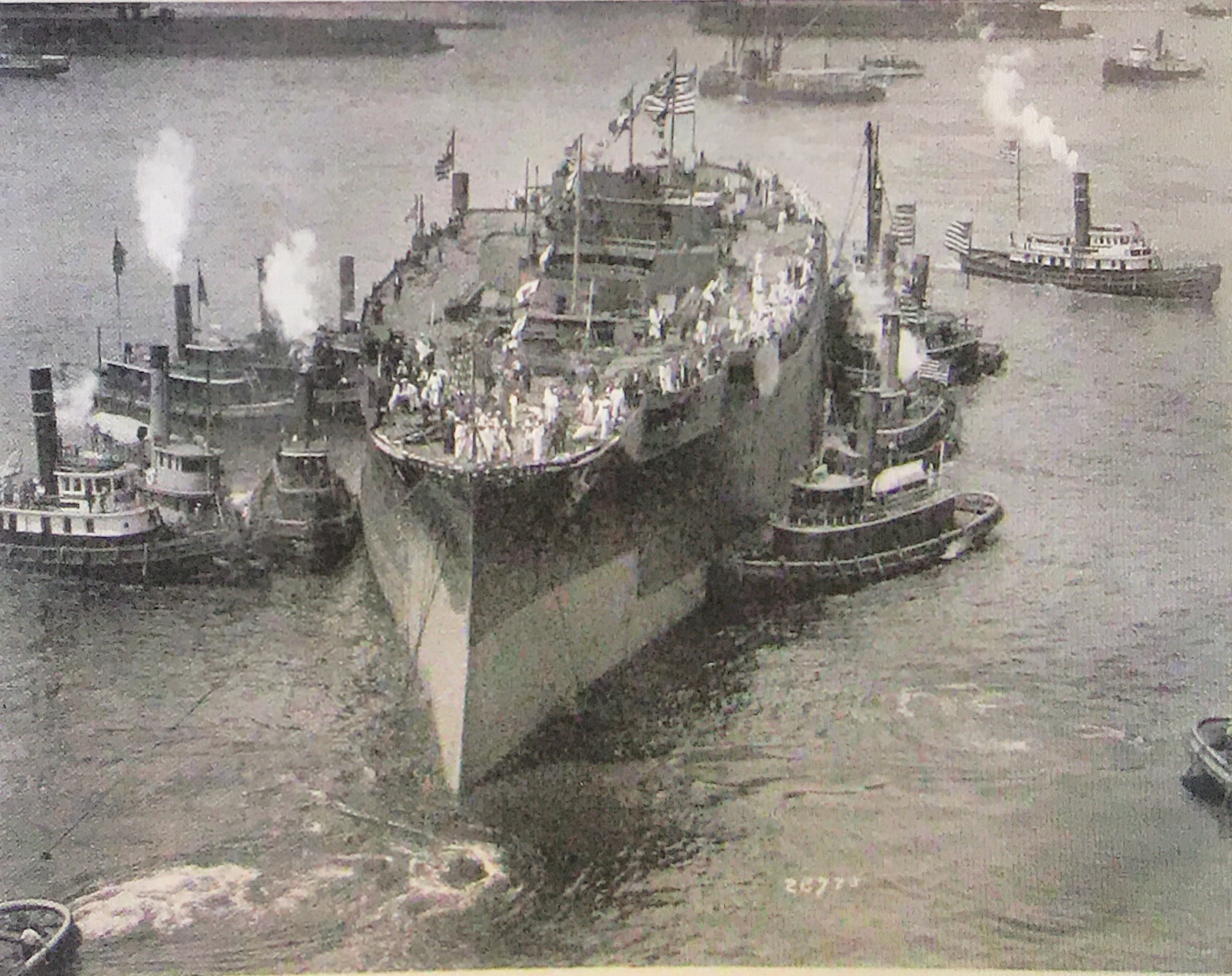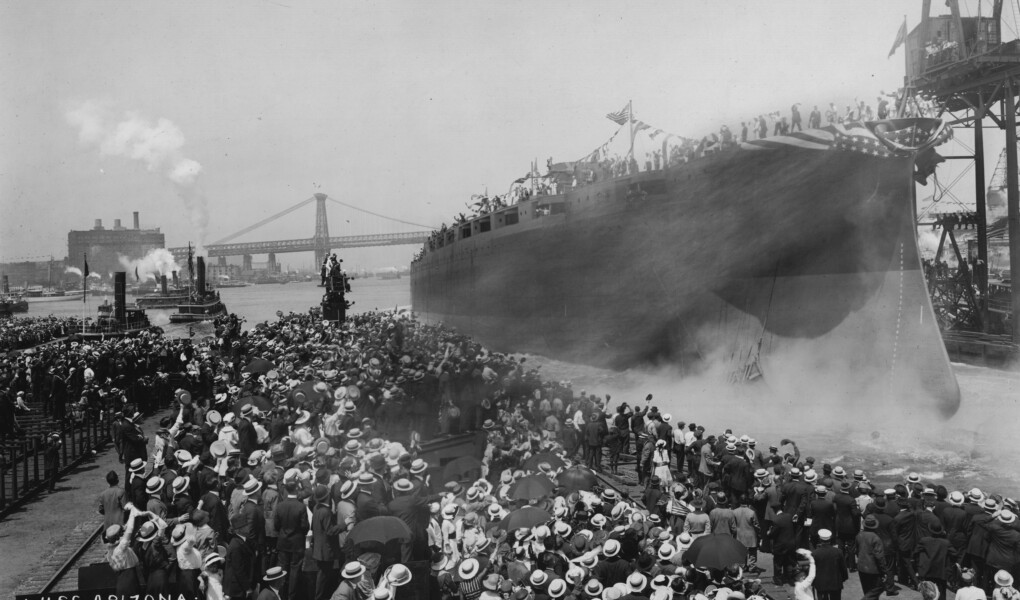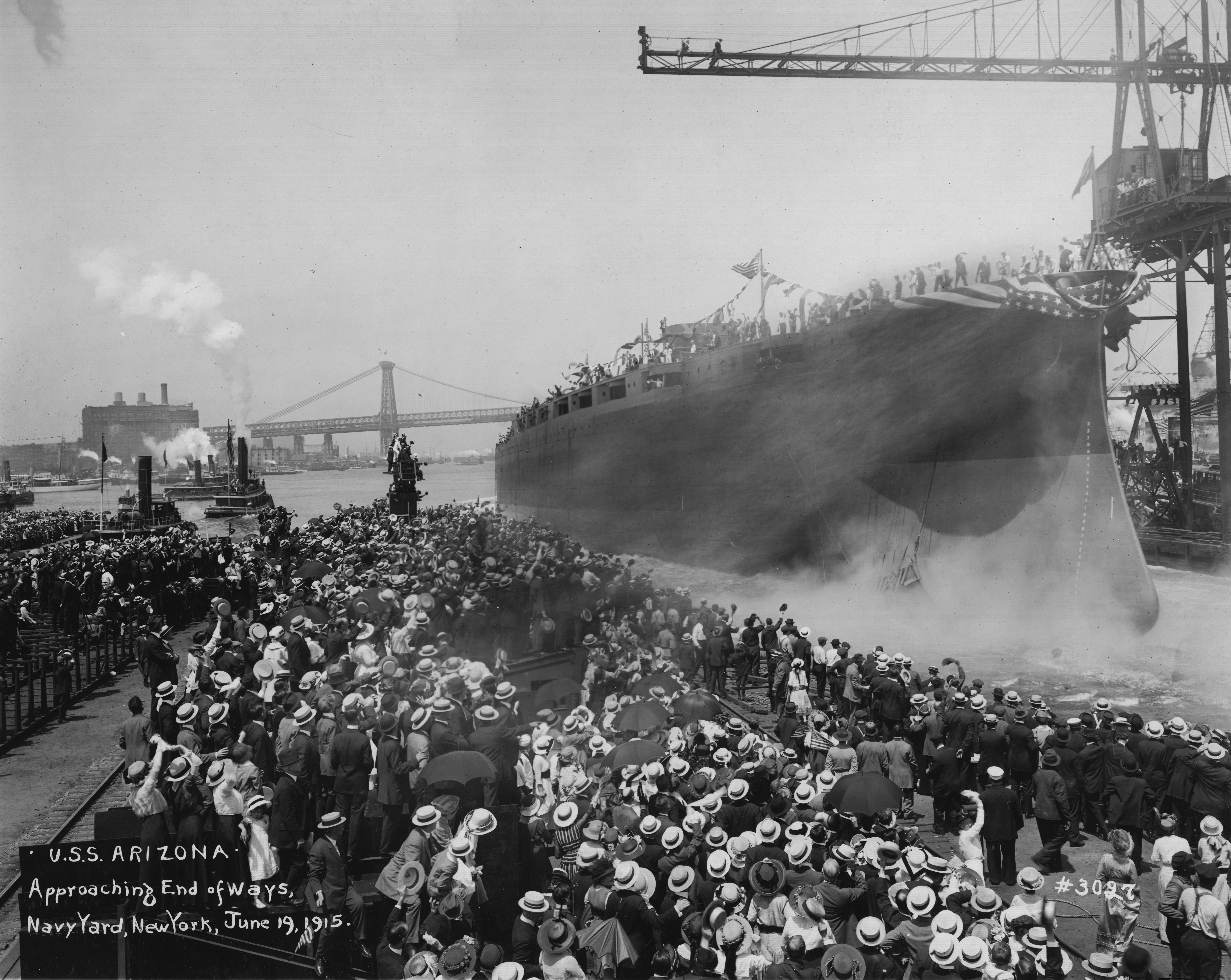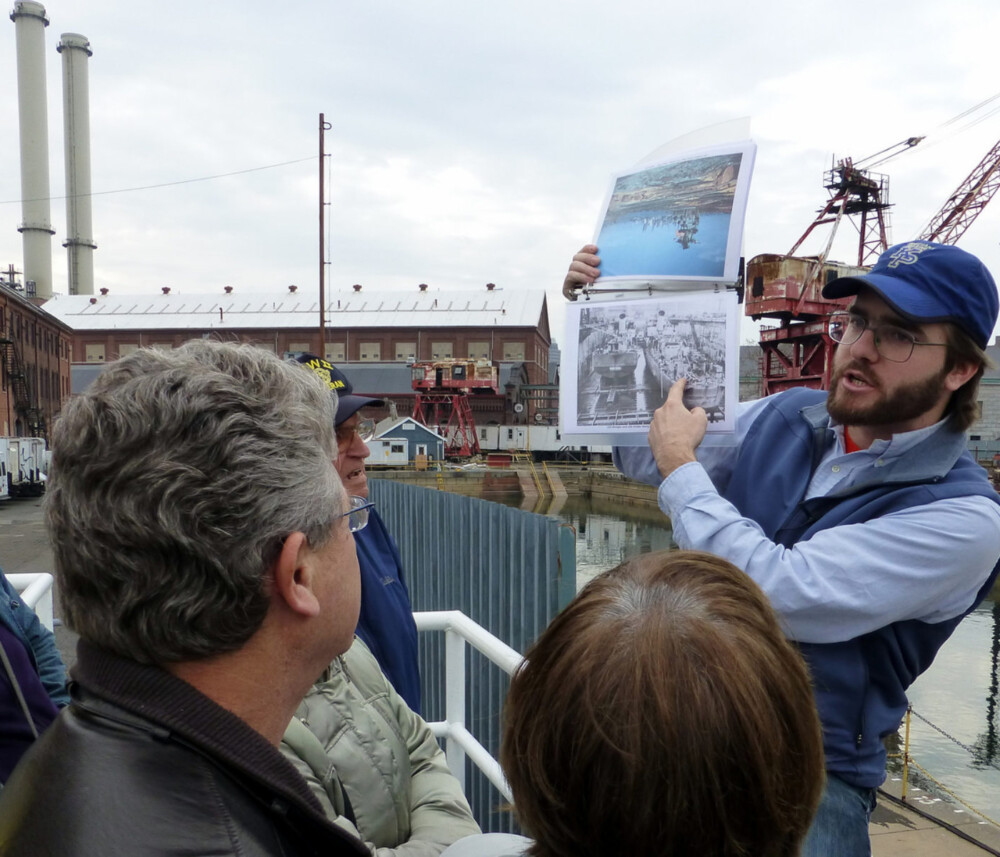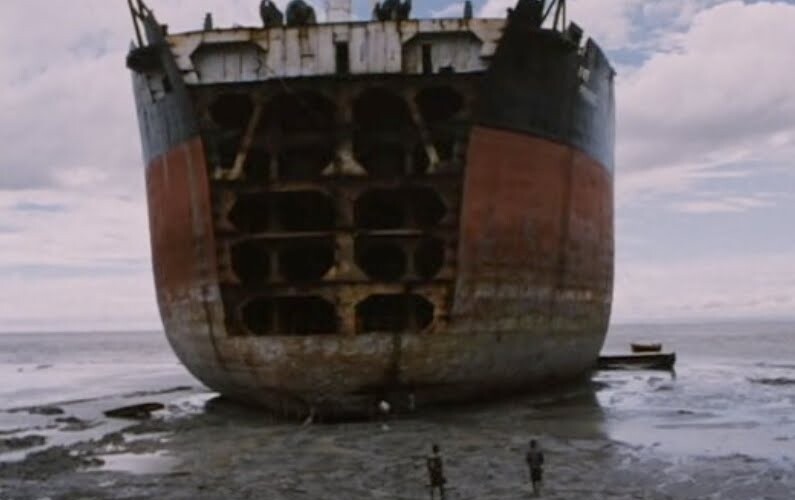Today marks the anniversary of the launching of USS Arizona at the Brooklyn Navy Yard. We have written about the Arizona many times before, including about the impact the sinking had on the Yard’s workers half a world away, and about our visit to the memorial in Pearl Harbor. It remains one of the most well-known and written about ships in the history of the US Navy, but we want to take a look at some lesser-known incidents in its storied history connected to the Yard.
When looking back at the ship’s history from the perspective of its tragic end, one can’t help but find many omens; when taken together, they seem to have foretold its fate. They are, of course, coincidences, not curses, but fascinating nonetheless.
First comes the story of Henry Williams, Jr. At the ship’s keel laying on March 16, 1914, he was just three years old, and his father was a naval constructor at the Brooklyn Navy Yard. Young Henry got the honor, along with four other young boys, of placing the first ceremonial bolts of the keel. During the ceremony, Henry sidled up to the guest of honor, Assistant Secretary of the Navy Franklin D. Roosevelt, and grabbed onto his index finger, holding tight throughout the proceedings, an image captured by photographers.
While this moment before the nascent Arizona would bring them together, the moment of the ship’s death would as well. 27 later, the ship’s sinking at Pearl Harbor would change the course of history for the president, but Henry Williams was affected more directly: on December 7, 1941, he was a US Navy lieutenant, a staff officer stationed at Pearl Harbor. He was the only person present for both the ship’s birth and its death.
The launching on June 19, 1915 did not mark the completion of the massive battleship. In fact, it required 16 more months of work at the Brooklyn Navy Yard before its commissioning the following October; as you can see below, it lacked most of its superstructure and main guns when it slid down the shipways into the East River. Watched by 70,000 people, it was the largest crowd ever gathered at the Yard, or for any American ship launching up to that point.
Following commissioning, Arizona was dispatched to Hampton Roads, VA for gunnery practice, Newport, RI to pick up torpedoes, and finally Guantanamo Bay, Cuba for final trials and testing, and to participate in the annual fleet exercises in the Caribbean. Here is where its troubles began.
During testing, the blades of the starboard low-pressure turbine were stripped, cutting power from four engines to just one. After the engineering casualty, Arizona had to limp back to New York for massive repairs. Arriving the day after Christmas, the work dragged on for more than two months. Rather than swimming in the balmy Caribbean, Arizona’s sailors got to spend a frigid New York winter in Dry Dock No. 4.
The date of the engine failure: December 7, 1916, 25 years to the day before the attack on Pearl Harbor.
